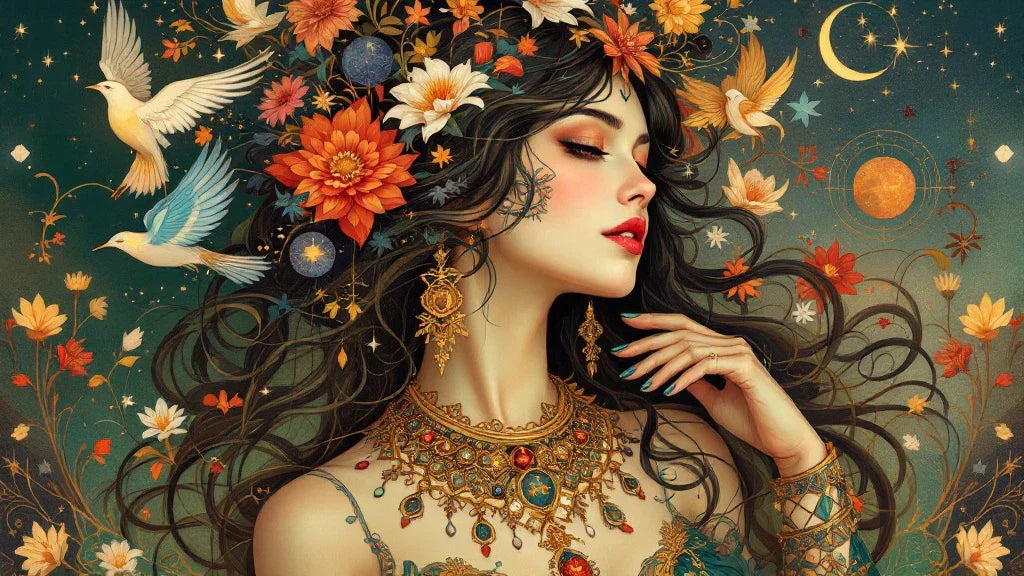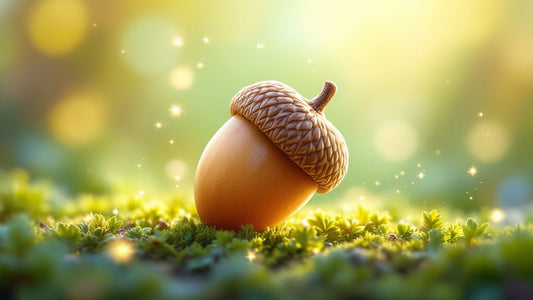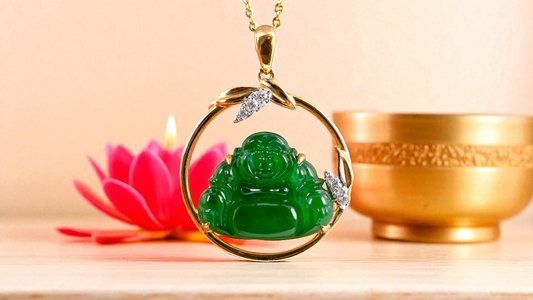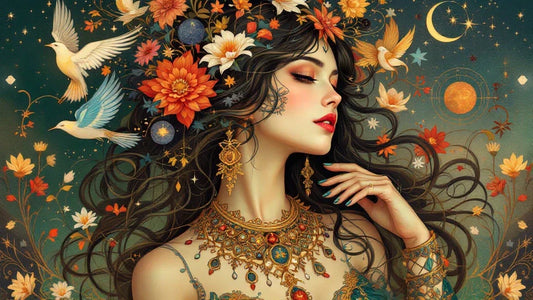
Jewellery Symbolism Explained: Meanings, History & How to Choose
Share
Jewellery symbolism is more than decoration — it’s a quiet language of meaning, emotion, and belief. Across cultures and centuries, people have worn symbols not just to be seen, but to feel something: strength, protection, connection, or hope.
From ancient Egyptian scarabs to Indigenous dreamcatchers and African Adinkra motifs, symbols have carried stories about identity, resilience, and belief. Today, those traditions continue — with motifs like bees, wishbones, or stars reimagined in minimalist forms for modern meaning.
Jump to Section:
- History of Jewellery Symbolism
- Categories of Jewellery Symbols
- Modern Interpretations of Jewellery Symbolism
- How to Choose Symbolic Jewellery
- Conclusion: Meaning You Can Wear
- FAQs
History of Jewellery Symbolism
Jewellery has always meant more than adornment. Across time and cultures, it has carried meaning — as protection, status, faith, or memory. From ancient burial rites to modern gifting, symbols in jewellery have connected people to something bigger than themselves.
Ancient Civilisations: Power, Protection, and Belief
In Ancient Egypt, scarabs were carved into amulets to represent rebirth and safeguard the soul. Circles symbolised eternity. In Mesopotamia, seals and animal motifs marked status and fertility.
Across the globe, symbols held different meanings. In China, jade was worn for purity and spiritual balance. In Indigenous American cultures, dreamcatchers and spirit animals appeared in jewellery for protection and guidance. Among African communities, Adinkra symbols carried layered messages — like wisdom, unity, and perseverance — woven into metals or beads.
Middle Eastern and Tribal Symbolism
The Hamsa hand, common in Middle Eastern jewellery, dates back thousands of years. It symbolises divine protection and is often worn to guard against the evil eye. In East African cultures like the Maasai, brightly coloured beadwork was used not only as decoration but to signify age, status, and life events — from initiation to marriage.
Medieval to Renaissance Europe: Faith and Allegiance
In Europe, jewellery expressed religious devotion and social class. Gold was often reserved for the elite. Crosses and saint icons were worn for protection, while heraldic symbols like lions or eagles displayed lineage and loyalty.
The Renaissance saw a return to classical symbolism — Greek gods, serpents, and celestial signs reappeared in fine jewellery, echoing love, knowledge, and transformation themes.

Victorian Sentimentality: Memory and Emotion
The Victorians wore jewellery as emotional armour—to grieve, remember, or communicate feelings silently. Acrostic jewellery used gemstone initials to spell words like “Regard” or “Dearest.” Mourning pieces often used jet, onyx, or woven hair to symbolise loss and remembrance.
Categories of Jewellery Symbols
Symbolic jewellery spans cultures, eras, and design styles — but most motifs fall into a few core categories. These categories reflect universal themes like protection, identity, love, or growth. Below is a breakdown of common symbols and what they represent.
| Category | Common Symbols | Meaning | Cultural Variations |
|---|---|---|---|
| Celestial | North Star, moon, constellation | Guidance, clarity, hope | North Star: Navigation (West), Divinity (Indigenous) |
| Spiritual | Wishbone, rainbow, lotus | Hope, growth, transformation | Rainbow: Renewal (West), Peace Offering (Indigenous) |
| Animal | Elephant, butterfly, bee, owl | Strength, rebirth, community | Bees: Royalty (Egypt), Hard work (Modern Europe) |
| Protective | Horseshoe, hamsa, evil eye | Protection, luck | Hamsa: Middle East (spiritual defence), Global talisman |
| Other Motifs | Heart, key, arrow, acorn | Love, direction, ambition, growth | Arrows: Direction (Greek), Survival (Native American) |

Modern Interpretations of Jewellery Symbolism
Jewellery symbolism today is more personal than ever — not rooted in tradition, but in intention. From quiet reminders of strength to conscious material choices, people now wear symbols to express their identity, values, and lived experience.
Personal Symbols for Identity and Intention
Symbols like the wishbone, North Star, and elephant are often chosen for what they quietly say: hope, guidance, resilience. Someone may wear a wishbone to mark a fresh start, or a North Star to stay grounded during change.
→ Explore how wishbone jewellery reflects potential and new beginnings
Sustainability and Materials with Meaning
Many designers now work with recycled metals, lab-grown stones, and low-impact processes. These materials carry their own symbolism — responsibility, care, and mindful living. Bee motifs, in particular, have become associated with sustainability, community, and environmental awareness.
→ Discover why bee symbolism in jewellery represents both purpose and eco-conscious design
Gender-Neutral Symbols and Universal Appeal
Symbols like stars, arrows, and geometric forms are chosen for their meaning, not gender. They speak to direction, movement, or inner clarity — and are worn by people of all identities.
→ Read how celestial jewellery reflects universal symbolism today.
Digital Age Symbolism
Symbolism is now shaped by online culture as much as tradition. Social platforms like TikTok have revived motifs like the butterfly, which used to represent personal growth, mental health, and transformation.
Emojis and modern iconography (e.g., hearts, planets, and flames) are now appearing in jewellery design. Some brands are also integrating tech: QR-code or NFC-embedded pendants link to personal stories, voice notes, or digital memories, turning symbols into interactive keepsakes.
How to Choose Symbolic Jewellery
Choosing symbolic jewellery is about more than appearance — it’s about meaning. Whether buying for yourself or someone else, the correct symbol can reflect identity, celebrate a milestone, or quietly offer support. Here’s how to choose a meaningful piece that fits your story:
1. Choose a Symbol That Reflects You
- Elephants symbolise resilience and loyalty
- Stars represent direction and purpose
- Wishbones are tied to new beginnings
2. Match the Symbol to a Moment
-
Acorn Necklace: A calm symbol of strength and potential.
- Recovery: Rainbows or butterflies (transformation)
- Career change: Bees (hard work and purpose)
- New beginnings: Wishbones (hope and intention)
→ Read how rainbow jewellery reflects emotional growth and life transitions
3. Choose Materials That Enhance the Meaning
- Gold suggests strength and tradition
- Silver feels modern and personal
- Gemstones like emerald (renewal) or ruby (passion) can add emotional weight
→ Discover the symbolic meaning of emeralds in modern jewellery
4. Give Jewellery with a Message
Symbolic jewellery makes powerful gifts — not just for birthdays or holidays, but for meaningful transitions. A star pendant can say “keep going,” while a bee charm might celebrate someone’s dedication or purpose.
5 Questions to Help You Choose the Right Symbol
- What do I want this piece to say about me — or to someone else?
- Am I celebrating something, healing, or starting fresh?
- What traits do I value most right now — strength, clarity, protection, love?
- Do I feel more drawn to nature-based, spiritual, or abstract designs?
- Is there a material (gold, silver, gemstone) that adds meaning to the symbol?

Conclusion: Meaning You Can Wear
Jewellery has always told stories — but symbolic jewellery tells yours. Whether it’s a pendant worn for protection, a charm gifted for strength, or a star chosen to reflect hope, these designs carry more than visual appeal. They hold memory, emotion, and identity. Symbols allow us to say something — quietly — about what we believe, value, or wish for.
In a fast-moving world, these small objects offer something grounding—a reminder, a reflection, a gift that means more than words.
FAQs
What is symbolic jewellery?
Symbolic jewellery refers to pieces that represent values, emotions, or beliefs — such as protection, hope, or transformation — through motifs, materials, or shapes.
What are the most popular jewellery symbols?
Some of the most recognised symbols include stars (guidance), hearts (love), wishbones (luck), bees (purpose), elephants (strength), and rainbows (renewal).
Is symbolic jewellery the same as spiritual jewellery?
They often overlap. Spiritual jewellery relates to beliefs or energy, while symbolic jewellery includes emotional or personal meanings, like growth or protection.
How do I pick the right jewellery symbol?
Start with what matters to you. Choose a symbol that reflects your values or a moment in your life, such as a wishbone for new beginnings or a star for clarity.
What is the most meaningful symbol in jewellery?
There’s no single answer — it depends on the person. Some find strength in the elephant, while others wear a star or rainbow to reflect hope, direction, or transformation.
How do I choose a symbol that fits my personality?
Think about what traits or values define you. For example, bees reflect purpose and dedication, while butterflies symbolise change and creativity.
Does the meaning change based on the metal or stone?
Yes, the metal or gemstone can deepen the meaning. Gold often symbolises warmth and tradition, while gemstones like emeralds or rubies carry specific associations.
☞ Explore our full collection of symbolic jewellery
☟ See below to explore our full Symbolism Blog — featuring stars, wishbones, rainbows, and more.





